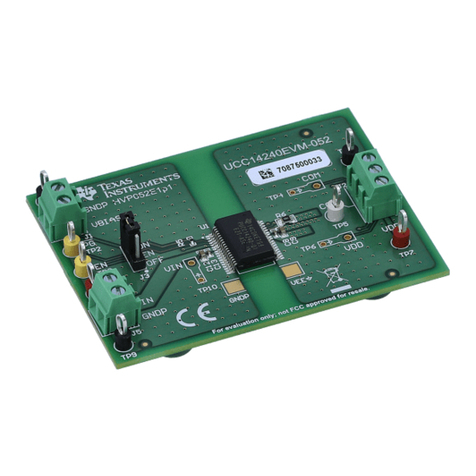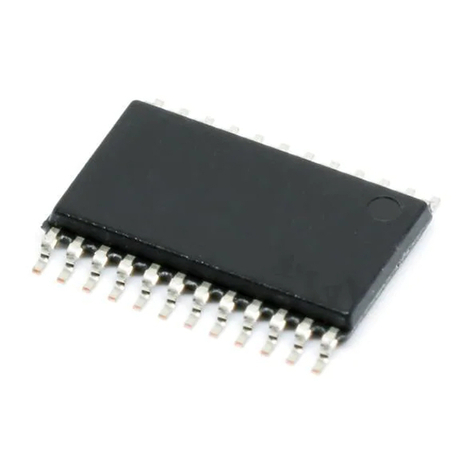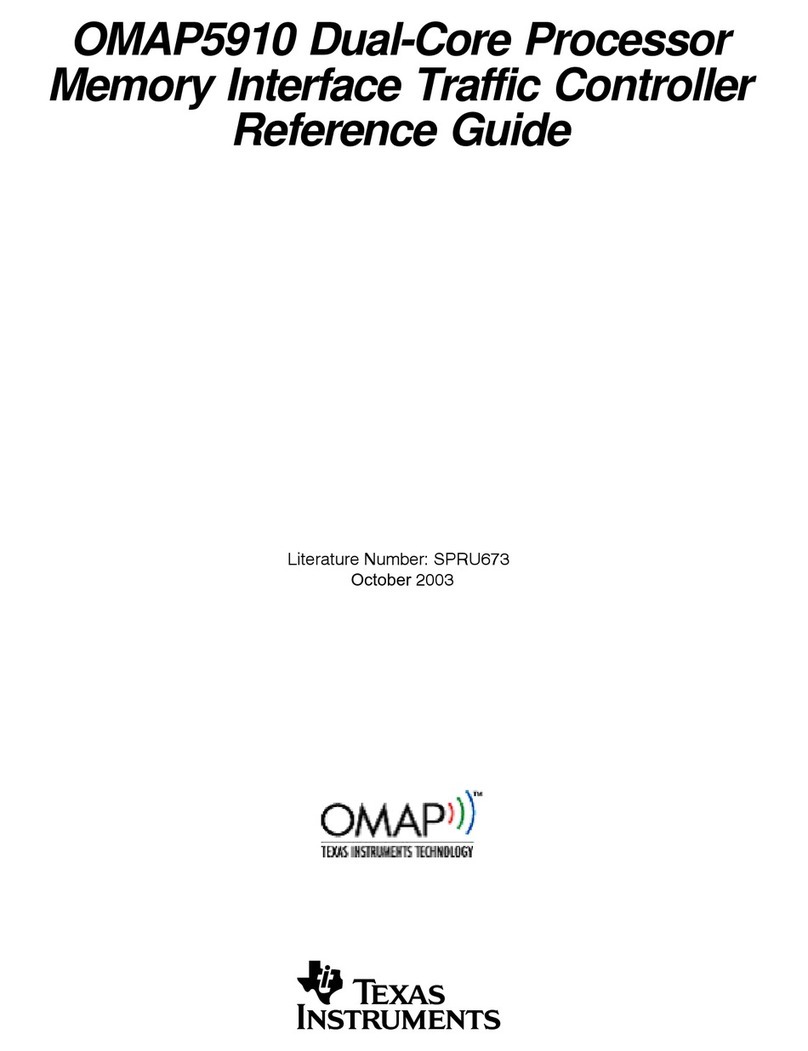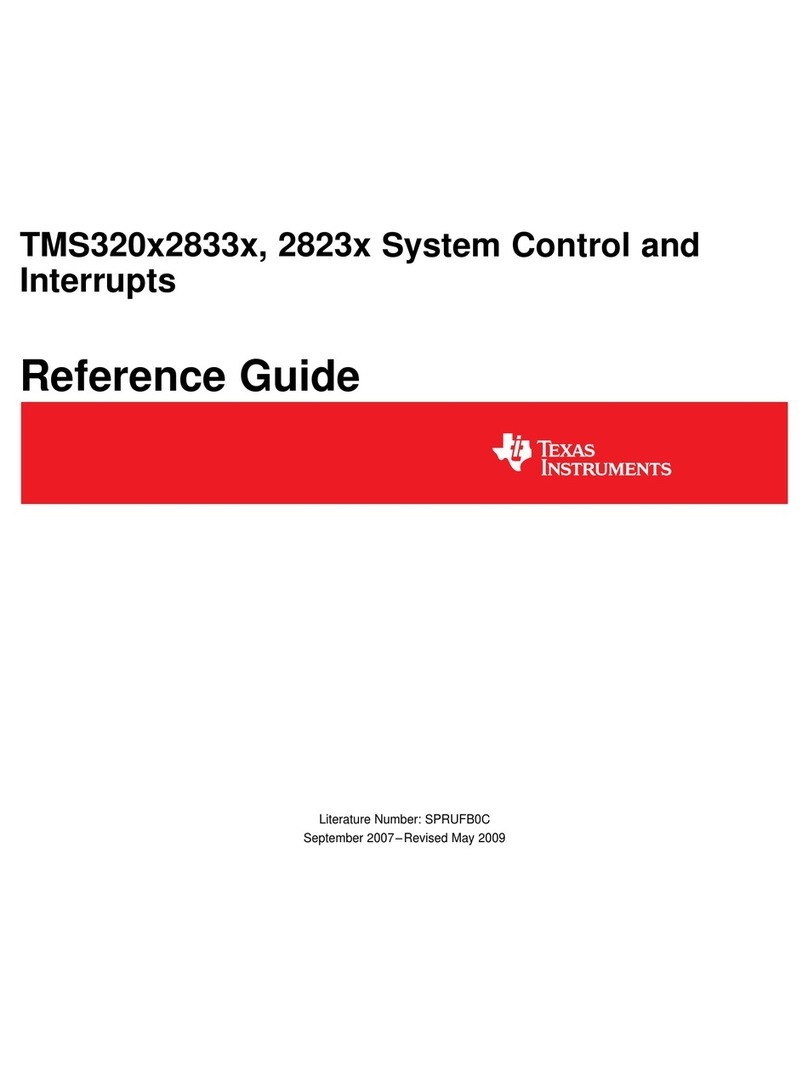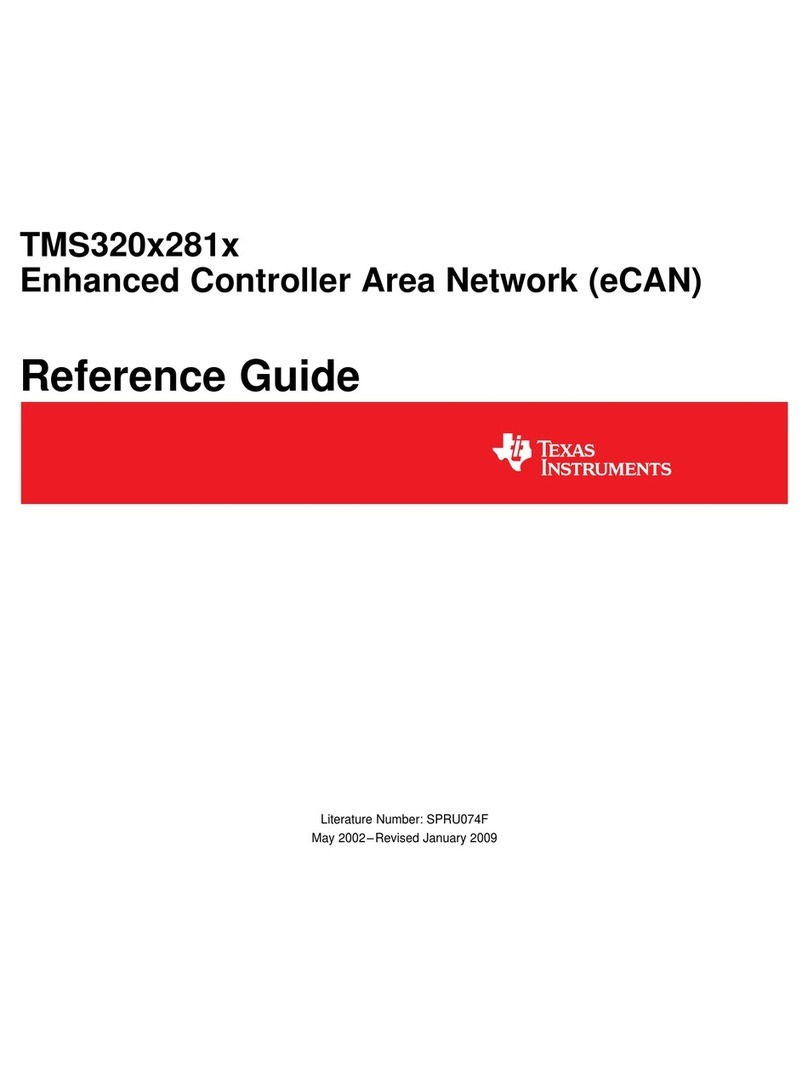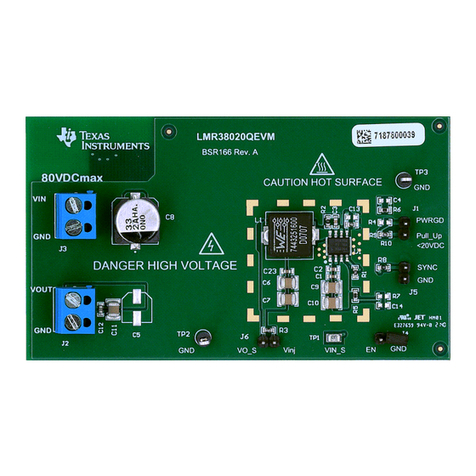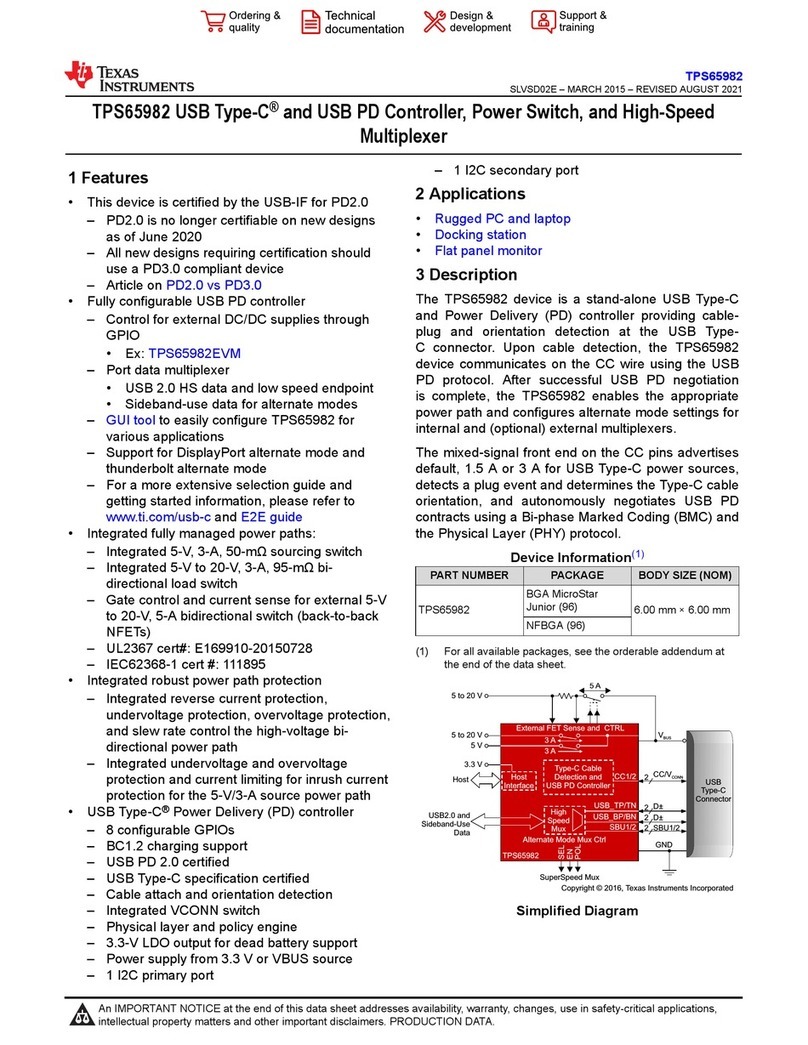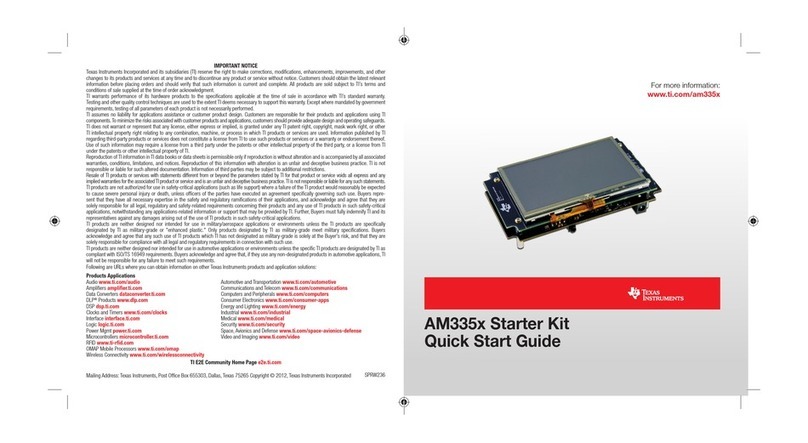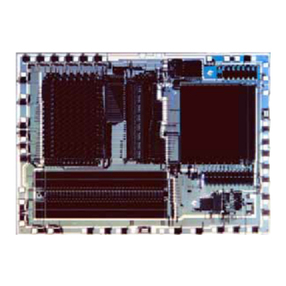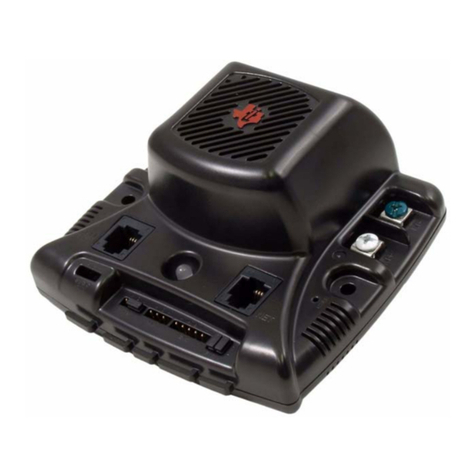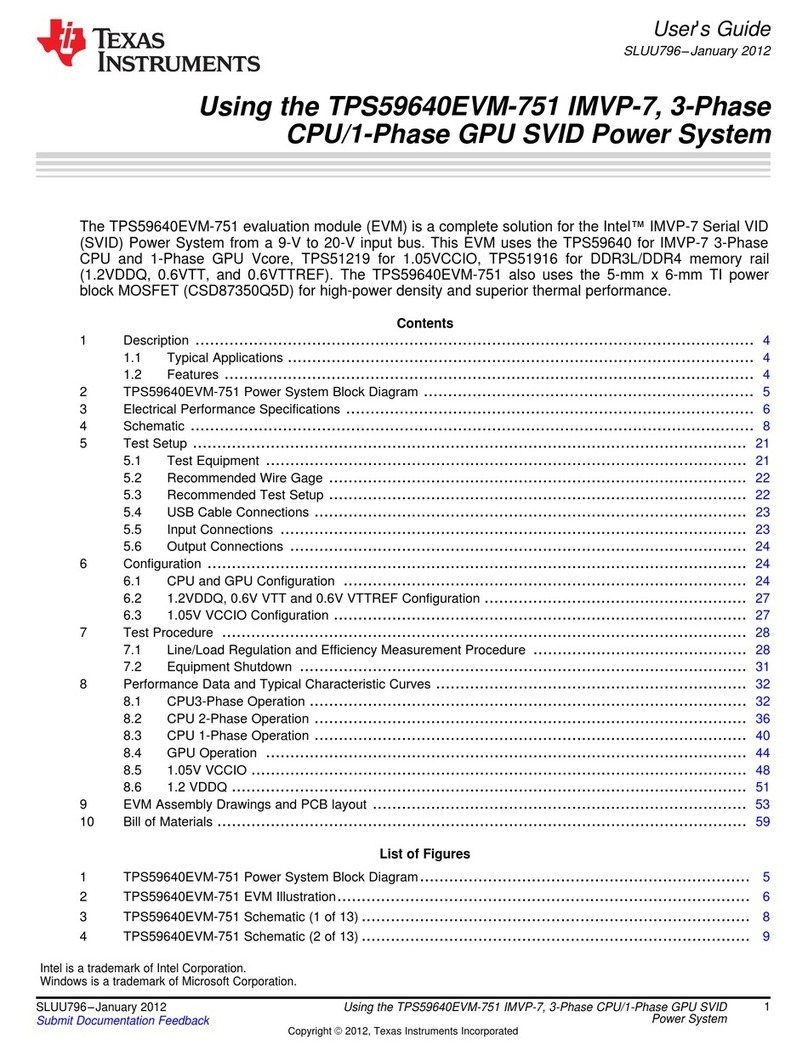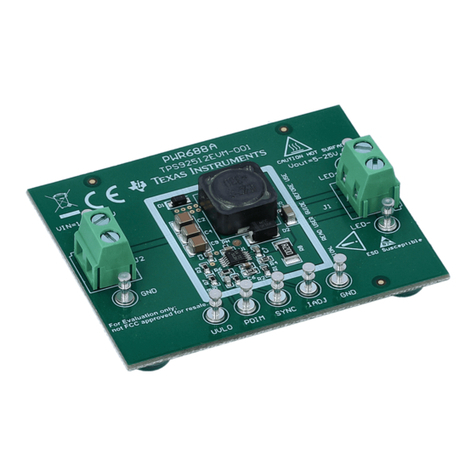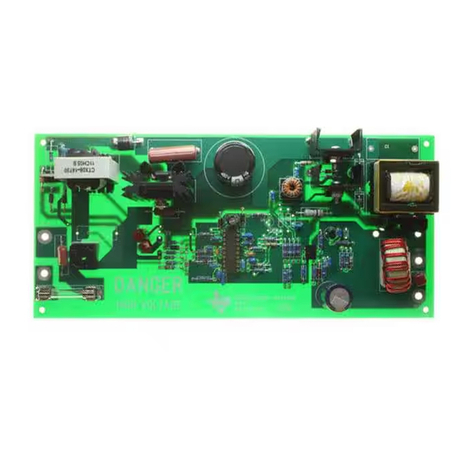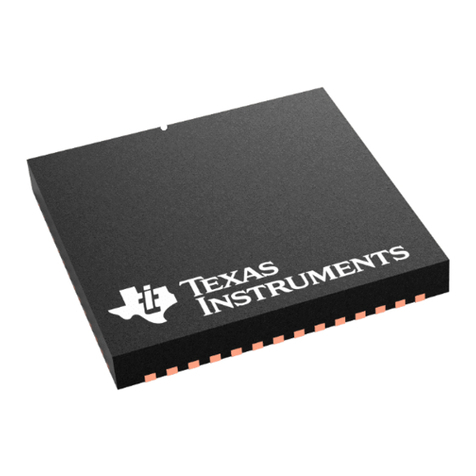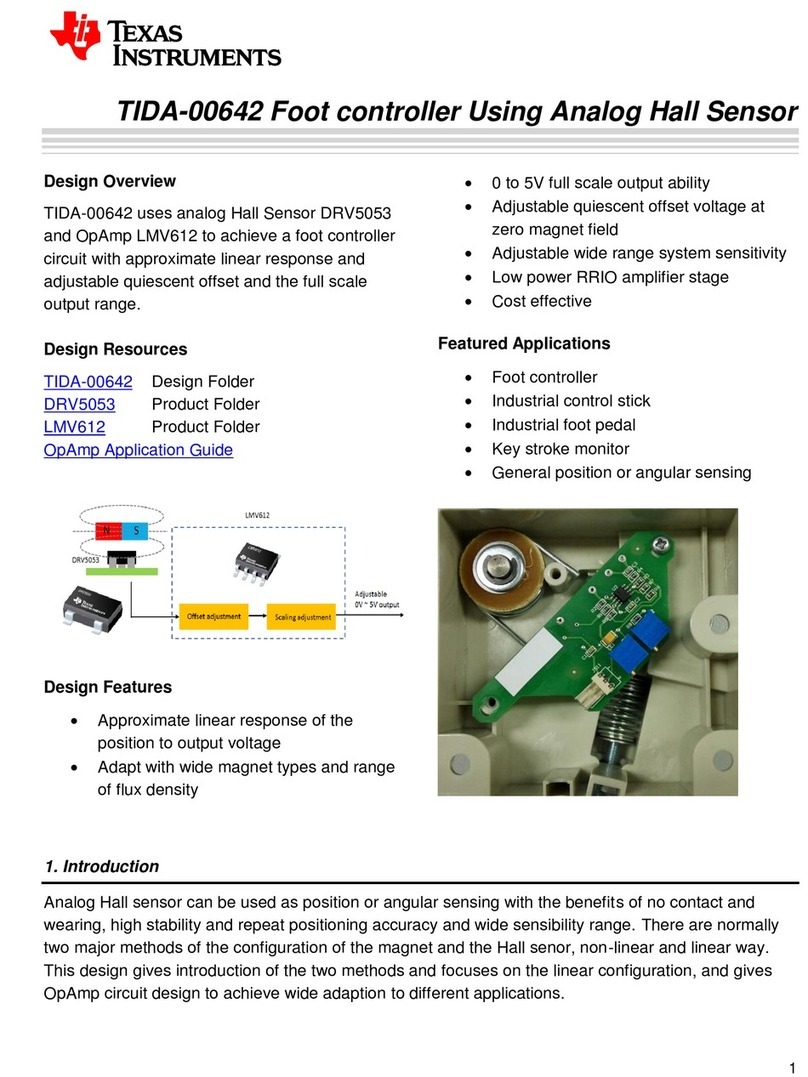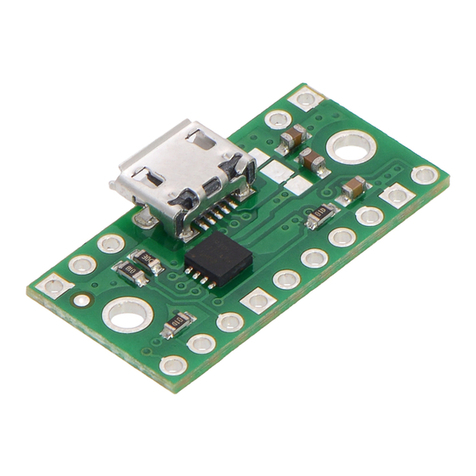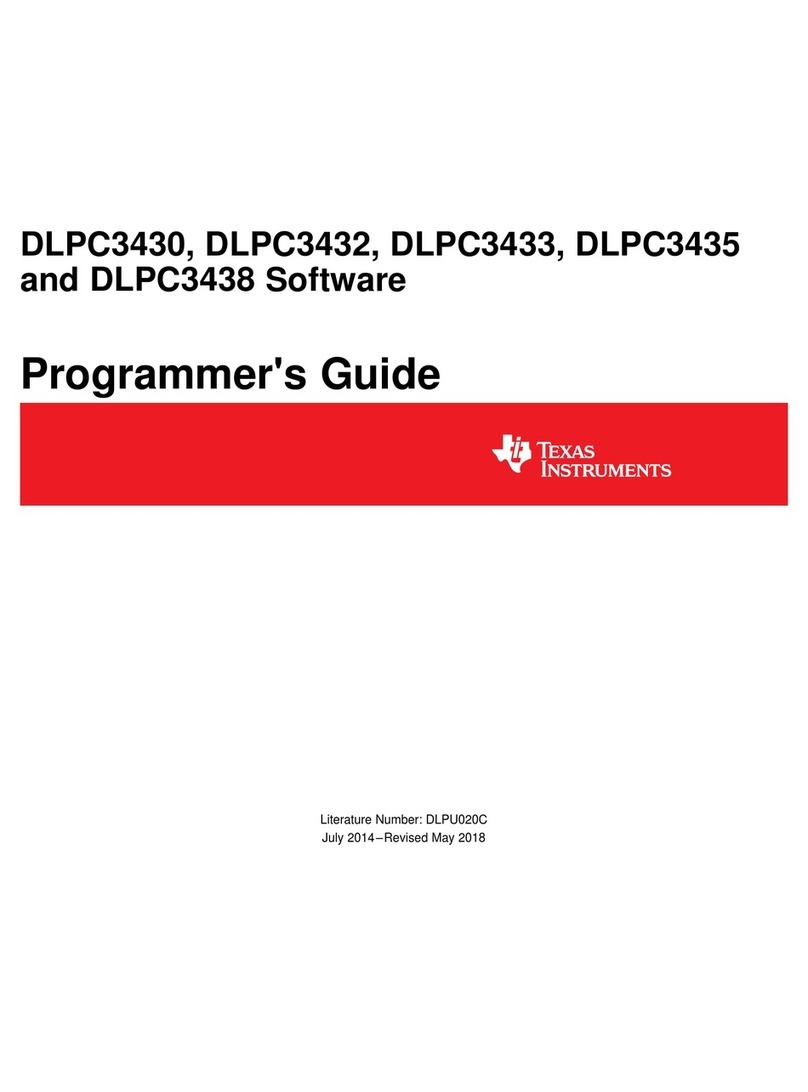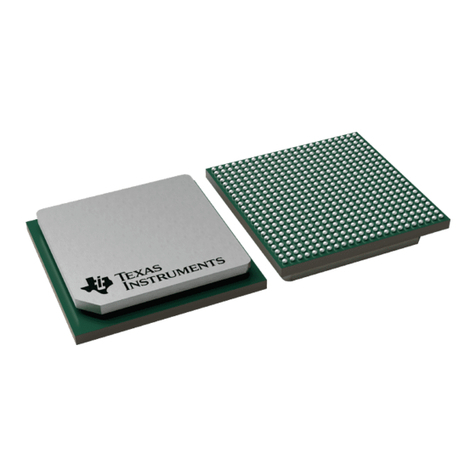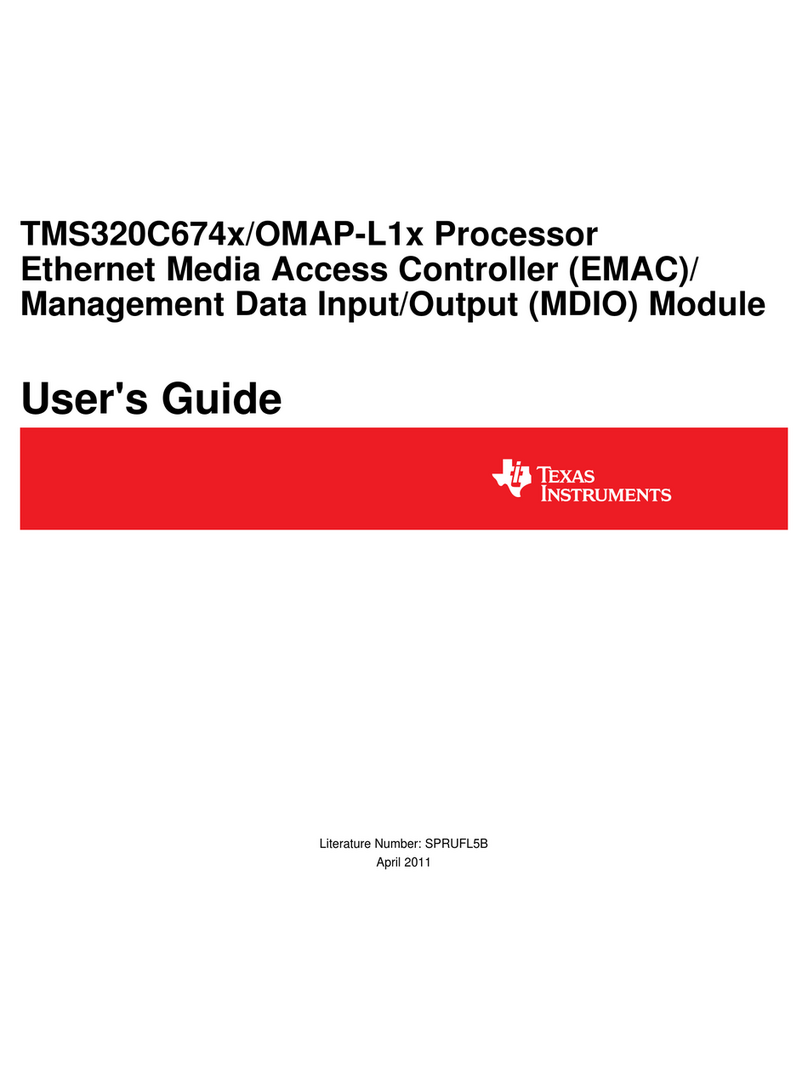
2.1 Hardware Set Up
Hardware Overview
www.ti.com
Auxiliary Supply A 12-V auxiliary supply connection at J9 to power the control and drive circuit.Optional 5-V supply connection at J10 to only power the control circuit3.3-V ISO Supply A 3.3-V isolated supply is generated on-board for serial communication. See theHardware Setup section of this document.PFC section Two-phase interleaved boost power stage for power factor correction11 – 33 Vrms ac ac input for the PFC section at connector J13-J14I/P
FB section Phase shifted full bridge power stage for dc-dc conversion48-V dc I/P dc input for the FB section at connector J26-J27Boot Jumpers Controls how the F280x boots. (J31)If no jumpers are placed, the target boots from flash.If a jumper is placed at 84, the target boots from the SCI.
To be able to run the various software builds for the projects included in this package a 12-V dc regulatedbench power supply, an isolated 11-33 Vrms ac power supply, a 48-V dc power supply, a bank ofappropriately rated resistive loads and an emulator are required apart from the hardware included in thispackage (suggested emulators are listed near the end of this document).
CAUTION
Do not connect 110-V or 220-V main supply to the ac input on the ACDCboard. It is designed to handle a low voltage ac input, and the connectionconfiguration must ensure this. If voltages exceeding 33 V ac are applied to thePFC section or voltages exceeding 50 V dc are applied to the FB section, theboard can be damaged.
The application-specific motherboard provided in this kit can be used in one of two ways:1. Test Drive – Using the provided GUI application, you do not require Code Composer Studio™ oremulation tools. This provides a great way to run or demo the application code quickly and see whatfunctionality the hardware offers. Note: exactly the same functionality can be achieved by using theCode Composer Studio Watch Window and graphing features during emulation in the second mode.2. Code Composer Studio Software Development Platform – With the project code provided, theapplication can be modified, compiled, loaded and run in a development environment. Code ComposerStudio and emulation hardware tools are required for this.
Note: By default, the V
DD
is connected to VDD_ISO (isolated supply for serial communications) onthe controlCARD through resistor R13. Similarly GND and GND_ISO are connected togetherusing resistor R16. Therefore if a non-isolated input ac supply is used, replace R16 on thecontrolCARD with around 2200pF capacitor and also remove resistor R13. If emulation isdesired in this case, you must use an isolated emulator.
Follow these steps to set up the hardware for either the GUI or software development platform:Step 1. Unpack the DIMM style controlCARD.Step 2. Spread open the winged retaining clips on controlCARD U23 connector.Step 3. Sit the DIMM card loosely in the connector slot. Make sure to align the two keyed notchesand position the card bottom corners inside the retaining clips (see Figure 2 )Step 4. Push vertically down using even pressure from both ends of the card until the clips snap andlock. (To remove or eject the card, spread open the retaining clips with thumbs.)
4TMS320C2000™ AC/DC Developer’s Kit Overview SPRUFR8 – September 2008Submit Documentation Feedback

